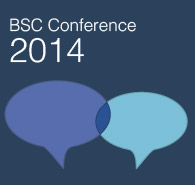BSC 2014: Sigi Hale on ADHD
by Siegfried Othmer | December 11th, 2014by Siegfried Othmer, PhD

I n one fast-paced hour, Sigi Hale of the UCLA Department of Psychiatry recapitulated his graduate work, his postgraduate work, and his research since that time with reference to ADHD. The body of work was largely concerned with the lateralization of function, which yielded new insights on ADHD. The specifics are beyond the scope of this overview.
The early research observed deficits in what the left hemisphere is ordinarily good at. Right hemisphere deficits were thought to interfere with higher-order cognitive function. This view has undergone some adjustment. The lateralized testing has revealed some RH competences in the ADHD population that lead to a processing strategy biased in favor of the RH. This leads to a different burden-sharing between the two hemispheres. So rather than thinking in terms of an impoverished right hemisphere, perhaps one ought to think in terms of problems in coordination between the two. The right hemisphere is perhaps not well-integrated into the whole. Colloquially, Sigi refers to the RH as being “off the leash.”
The testing realm biases one in the direction of real-time performance, and in that regard the thinking about RH competences has had to be adjusted. At this point, I’d like to introduce an observation from our own work: Those of us involved in the remediation of ADHD also have to fit into the picture that RH training has a significant role to play in remediation. What is just as obvious, however, is that we cannot just train the right hemisphere. Left hemisphere training is involved at every step of the way. Moreover, the starting protocol for the ADHD spectrum utilizes inter-hemispheric placement, and thus targets bi-hemispheric coordination directly. Both observations implicate the relationship between the two hemispheres in remediation.
But if deficits in RH function are not so obtrusive, what might be the issue? We take a hint from the fact that we are training in the infra-low frequency region. We are training the network relationships that determine the state of the system over longer timescales. We are training baseline states, or resting states. The implication is that where our brains hang out in the steady state determines how well they function when challenged. We may be dealing with a preparedness state, the poise of the nervous system as it confronts its challenges. And in that regard, the RH may play a more dominant role.
Hale suggests that abnormal functioning of the Default Mode Network (DMN) in ADHD may result in reduced capacity to coordinate aspects of task-directed cognition. But it is understood that this is not the whole picture. One may also have modular deficits in one subsystem or another, and there may also be deficits in adaptive state setting under challenge (related perhaps to the coordination of the DMN with the task-positive networks, and in turn with the sensory networks, under challenge conditions?). One ends up with a composite picture in which each element may contribute to ‘convergent’ deficits. A particular deficit may have disparate contributing sources.
My reaction to this presentation from our vantage point is that various of the testing procedures employed in this research could be useful clinically to pin down the particulars in cases of ADHD. Then results could be tracked through the training process to observe whether normalization is in fact achieved with respect to the particular functions being probed. It would be nice to have more clarity on the issue of whether we are resolving the core deficits in ADHD or mainly enhancing compensatory skills.






Great article.
Hi Siegfried,
Great synopsis of the work and issues!
Cheers,
Sigi